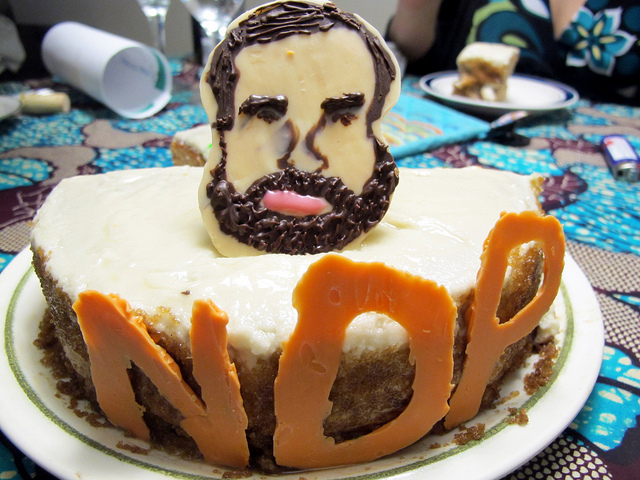A few weeks ago, I was toying with a quiz asking readers if they knew which provinces the NDP now governed and the names of their premiers. The point was that at various stages in recent decades, the NDP has formed governments in five provinces and one territory.
Now, suddenly, the answers are easy, far too easy: Manitoba and Greg Selinger. Which we know for all the wrong reasons. The Manitoba government and Premier Selinger made national news when five senior cabinet ministers revolted against him, while polls already indicate the NDP is chopped liver. After the next Manitoba election, for the first time in ages, there are likely to be no NDP provincial governments in Canada.
These are tough times for New Democrats. Last Monday the party was crushed in a federal by-election where in 2011 the same impressive candidate, Trish MacAuliffe, came a surprisingly strong second to the late Jim Flaherty. Yet this week she came a pitiful third with a derisory eight per cent of the vote, while the Liberal candidate gave Mr. Flaherty’s successor a run for her money. A good night for the Liberals, even in defeat; a troubling one for the Conservatives, even in victory; and an unmitigated disaster for the NDP.
There’ve been too many bad nights for the NDP recently. Strong candidates with known NDP affiliations just lost mayoralty races in both Winnipeg and Toronto. Both Judy Wasylycia-Leis and Olivia Chow would have made terrific mayors, both were early front-runners, and both got crushed. Judy W-L lost by 53,000 votes, Olivia Chow came a poor third, way behind even Doug Ford. In order to defeat Mr. Ford, tens of thousands of NDP sympathizers simply migrated en masse to John Tory, delivering him his victory.
As is shown with wearying regularity, strategic voting is the NDP’s nemesis.
The blow to Ms. Chow followed an Ontario election in which Toronto also deserted the NDP as a way of defeating a particularly alarming Conservative leader. This followed the B.C. election, when the NDP blew as sure a thing as there could be in the weird world of electoral politics. In Nova Scotia, the NDP government, the first in the province’s history, also became the first ever to be defeated after a single term. A helluva record. More recently, an election in New Brunswick made history for a different reason: The Green party won a seat while the NDP did not. Now that really hurts.
In Saskatchewan, the first province ever to elect a CCF/NDP government under the sainted Tommy Douglas and which returned NDP governments for decades, is led by the most popular premier in the country, conservative Brad Wall. Mr. Wall has the approval of 66 per cent of his citizens and Conservatives own the province both provincially and federally, the NDP failing to win a single seat in the 2011 federal election. Next door in Manitoba Greg Selinger stood at 30 per cent approval — and that was before his government publicly imploded.
In all these provinces, the punditocracy predicts the NDP have blown their chances for years to come. On the one hand, this is possible. On the other, pundits just make these things up.
That leaves Canada itself, where the NDP glass is either half-full or half-empty, depending on your inclinations. On the one hand, the NDP collapse in the Whitby-Oshawa by-election can hardly be laughed off. On the other, there is considerable good news, most of it relating to Thomas Mulcair’s first-rate performance as Leader of the Opposition. Mr. Mulcair’s stellar work in the House, especially during Duffygate and the debate on Canada’s participation in the anti-Islamic-State coalition, as well as his national child care proposal, has won him the regard of an initially skeptical media. This in turn has increased his respect among the public. According to Ekos research, Mr. Mulcair had a national approval rating in October of 58 per cent, compared to Justin Trudeau’s 46 per cent and Stephen Harper’s Obama-level 30 per cent.
Slowly — painfully slowly — this is translating into voting preferences, (if not alas by-election results). One October survey showed the Liberals down dramatically at 32 per cent, the Conservatives stuck at 30 per cent, and the NDP at 25 per cent. That’s a genuine three-way race. On the other hand, the October average for all surveys was less encouraging: 35, 30, 22. On the other hand, the NDP continues to dominate in francophone Quebec, which seriously threatens Liberal prospects.
On yet another hand, it’s indisputable that the Prime Minister has had a vigorous, high-profile month beginning with the shootings in Ottawa, through his tax break and child benefits promises (which create impossible strategic conundrums for his opponents), and on to the world stage and last week’s confrontation with President Putin. How this has affected party standings we don’t yet know, but Conservatives are sure feeling a lot better than they did last year. On the other hand, there’s that impressive showing of the Liberal candidate in Whitby-Oshawa, while strategic voting still threatens both the Conservatives and NDP.
New Democrats badly need some uplifting news — even a moral victory would be welcome — but whether it gets any won’t be known for many long, nerve-wracking months. On the other hand…
This article was originally published in the Globe and Mail.
Image: Flickr/Canadianveggie




